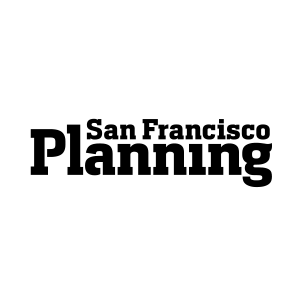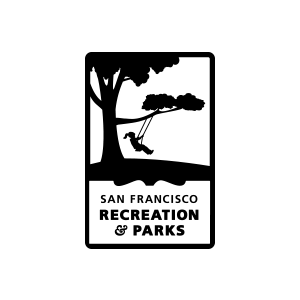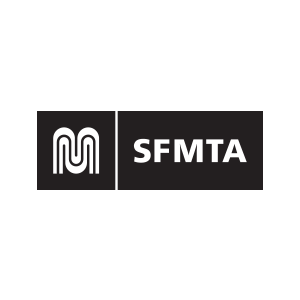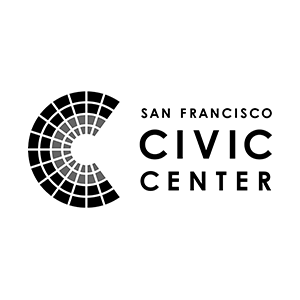Midge is the founder and Executive Director of the Bay Area Women’s and Children’s Center (BAWCC) in the Tenderloin. She lived in the Tenderloin for twenty years. In response to the lack of support services available to women and children in the neighborhood, she opened BAWCC in 1981 and the Tenderloin Community School in 1998. BAWCC was the driving force behind the opening of the two playgrounds located in Civic Center Plaza, now under renovation and scheduled to reopen in early 2018. Midge has fond memories living in the Tenderloin and taking her daughter to the Civic Center playgrounds and the public library.
“I think that it’s people just going through that space for work and it’s people who go there regularly and build a community of other people that do that as well. But the other piece is people like me. I have a different kind of connection with it because of the work I’ve done to transform those two quadrants in the Civic Center area into playgrounds but I have the best memories of taking my daughter Ashley there from when she was a toddler. We would go and make it a special Saturday outing about once every four or five weeks. I lived in the Tenderloin with her until she was four so we started going there probably when she was two or three and then we moved over near the Panhandle but we would still come back. And we’d go for hours. First we’d go to the playground and then we’d go to the library and do the lap-sit [story-time] in the children’s department of the library, and then we’d go back and play some more and have a picnic.”
“I remember those times so clearly. It’s not that I ran into the same people every time I was there but there were always some other parents around and kids around or maybe people that came into our center up on Leavenworth Street. Sometimes I knew people. I knew women who would come to the Civic Center because they would come into our center for services. So that’s the other piece of it, the parents that would bring their kids to that space just as an outing.”
Midge brought her daughter to the Civic Center for weekend outings because she felt it was a great place for kids.
“It was the combination of having great programming in the library, in the children’s department and having a great outdoor play area so it was kind of a perfect combination ‘cause when you have young kids, it’s really great to let them play and let them get their steam out and then go and do something like a lap-sit and go to the library and pick some books and then after you’ve done that for a while and they start to get antsy or anxious to play again, just right across the street is a great place to go and play. And because we had the two [playgrounds], the one was geared towards young kids and one was geared towards elementary aged kids, so there was something for a large age range of children, which was really great.”
Midge also talked about how the Civic Center holds special memories for her daughter.
“When my daughter was a teenager, they used to do some fun things in the Civic Center area for events or rallies or maybe to go to the Asian Art Museum and they’d meet there in Civic Center. She and her friends who were teenagers would say ‘I’ll meet you at the green playground’, which was the one on the south side, the larger playground across from the library. I’m sure if I asked Ashley ,who’s now in her early twenties, she would have some really great memories of the Civic Center and the spaces there as well, which is really neat.”
Prior to the playground installations in Civic Center, the area attracted a lot encampments.
“Farther back from when the playgrounds were built, there was a period of at least several years when it was a tent city so it was a huge homeless encampment. Right in the quadrants where the playgrounds are. I think it was like that for several years. Everybody referred to it as tent city.”
“When we started talking about doing a playground, I started the work for Bay Area Women and Children’s Center because part of our work was direct services and part was advocacy and since we were working with so many low income women and children, they were telling us they were living in single rooms in the Tenderloin and they didn’t have anywhere to take their children outside that they felt was a safe and fun place for the kids. And they didn’t have cars, so they couldn’t take them really far. So we started looking around for the best possible site that was in the Tenderloin or very close to the Tenderloin and an easy walk for mostly moms and their kids.”
“We looked around a variety of sites but I remember looking at the northeast quadrants [of Civic Center Plaza] and thinking, that would be perfect, perfect for a playground for the kids. Easy walk for anyone in the Tenderloin and families in South of Market because we did some work with agencies that were working with families in South of Market. And so we asked for a meeting with the mayor and he thought it was a good idea.”
Getting the first playground installed on the northeast quadrant of Civic Center Plaza was no small feat for BAWCC and the other organizations that supported the effort, but they were successful.
“When that playground opened, Willie [Brown] and I were the two MCs for the event. It was such a celebration and that was so successful so immediately. And so the first effort was basically led by Bay Area Women and Children’s Center but it involved other organizations with us. And then the deputy director of Rec and Park called me a few months after that opened and said, “That first playground is so successful, would you lead an effort to get another playground in the Civic Center?,” so the City came to me the second time.”
Midge would take her daughter to the Civic Center playgrounds often and witnessed the many other parents who brought their kids. When asked whether she felt safe or concerned for her daughter’s safety, Midge didn’t recall experiencing any problems, though her line of work gave her unique perspective of the social issues that unfold in the Civic Center’s public spaces.
“I thought it was pretty specific to the families with young kids. Or school aged kids that would go to the different play areas. I don’t remember if there was a person or a couple of people that would come into the playground to just sit and rest. I don’t ever remember getting hassled or having a problem in any way, but again, because of the work, those are the people that come into the center. It’s at Leavenworth and Eddy, so it’s the people that come into the Tenderloin. The people we work with are very low income and often homeless people and people who are using and so I don’t even pick up on it sometimes, the fact that that would be a scary situation for other parents because it’s not to me.”
Midge talked about late nights when she would pick her then high school-aged daughter up from the Civic Center BART station.
“I never felt she was unsafe because there were always some people just walking around there. You know, couples holding hands. People looking like they knew what they were doing, coming back from the theater that had just ended at 11 so it wasn’t just people that were possibly homeless or doing drugs or whatever because there were enough people around. I didn’t want her waiting there for a bus to come home to NOPA where we live but I didn’t think twice about her just walking to the car from the BART station.”
Now that Midge’s daughter is grown up and moved to Seattle, her interaction with the Civic Center is to primarily walk through the space to get to and from meetings.
“Now when I’m at Civic Center I’m going to a meeting or I’m coming from a meeting. It’s a pathway for me now. I’m going to the Asian Art Museum, I’m going to the main library, I’m going to next to the library or I’m going to City Hall. So now it’s more a place that I pass through than I stay and to me it looks pretty similar to the way it’s looked over the years.”
Midge believes access to Civic Center Plaza and the public library is really important, especially for the Tenderloin community that BAWCC serves.
“You create a community in a park or an area like that [Civic Center Plaza] and I think of that as a park area. If you’re going there regularly, you get to know the people and they become a part of your extended community and sometimes it extends beyond just meeting there and you become friends with that person. And so in terms of how many of the families live in the Tenderloin would access it, I know some do…we are lucky because we have this amazing facility. So going there, if the kids look across the street and they see that, they want to go play. That’s why we got the playgrounds built, originally it was for the Tenderloin families because there weren’t a lot of options for them to be outdoor from their living spaces. Especially now there’s a lot more being done in terms of nonprofit housing development and trying to make supportive family housing but the vast majority of people that live in the Tenderloin live in pretty dismal, difficult, small units.”
“When the two new playground areas are up and running, that’ll serve women and children. That’ll be great. The ones that were there that were just torn down, one was twenty years old and one was probably seventeen or eighteen years old. I always loved them, I thought they were so well designed but they weren’t up to code by the end and they were tired because they were old and well-used so when those are up and running, that’ll be great.”
“I really love the Civic Center area of this city. I think that if you go to the other side to cross Van Ness, which I consider to be part of the greater Civic Center, it’s amazing that we have the Ballet and we have the Opera and we have the Symphony, literally just a stone’s throw from City Hall. And the other side of the Civic Center, the main library is just a great facility and the Asian Art museum. The plaza itself between the Asian Art Museum and the library, I think is a very open, pretty, friendly place to me. So I have great affection for and really think we have a great Civic Center. I think that there are things that are being done which are good, continuing to look at it to see if there better ways to use this space for more people to feel like it’s their space. I’m very fond of it.”










